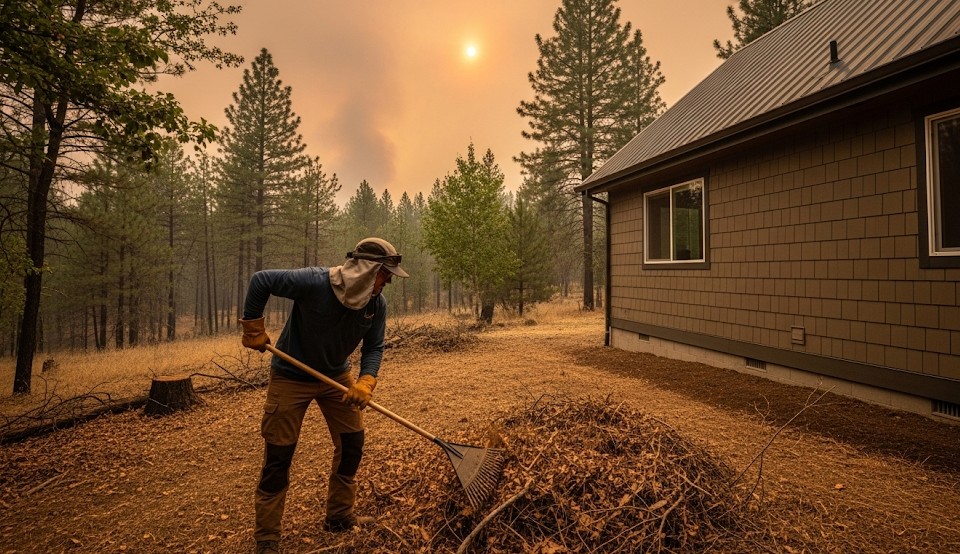Wildfire Prep: Hardening Home & Habits

Objective
Survive a wildfire threat by hardening your home, setting early evacuation triggers, and avoiding entrapment routes.
Scenario (Example)
Example: Red Flag warning; fire 15 km away with shifting winds. You live in a wildland‑urban interface with one main road out and a secondary dirt route.
Home Hardening (Zones)
- Zone 0 (0–1.5 m): Noncombustible area against the house—bare soil, gravel, or pavers. No mulch or flammable decor.
- Zone 1 (1.5–9 m): Clear leaves/needles; trim branches; move wood piles away. Install metal gutter guards and ember‑resistant vents.
- Zone 2 (9–30 m): Thin trees/shrubs to break fuel continuity; keep grass short; remove ladder fuels.
Trigger Points
- T1 (Prep): Pack car, close vents/windows, shut off gas, set sprinklers to wet the immediate perimeter.
- T2 (Leave): When smoke column leans toward you, visibility drops, or official advisory upgrades—go now.
- T3 (Emergency): If routes close or fire is visible nearby—don’t delay for more packing.
Evacuation Checklist
- Go-bags, meds, IDs, cash, hard drives
- Pets in carriers; leashes; pet food
- Long sleeves, pants, sturdy shoes; N95 masks; goggles
- Vehicle nose-out; lights on; windows up; AC on recirc
On the Road
- Avoid canyons and tree tunnels that channel heat and embers.
- Keep distance from utility lines and crews.
- If trapped: park in a cleared area, face away from fire, stay in vehicle, engine running if safe, lie low, cover skin.
Real Example
A neighborhood that cleared gutters, screened vents, and staged early evacuation kept all homes intact when embers fell. They left at T2, avoiding gridlock that formed 30 minutes later.
Contingencies
- Power loss → manual garage door release.
- Pets hiding → pre-stage carriers and practice loading.
- Primary road closed → use pre-scouted secondary route.
After-Action
Replace air filters; wash ash off roofs and gutters; update triggers and routes based on what you saw.
← Previous | All Articles | Next →
